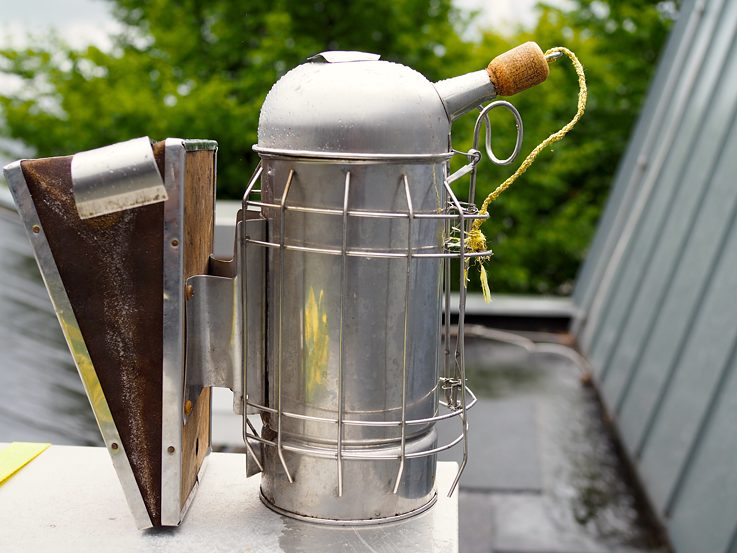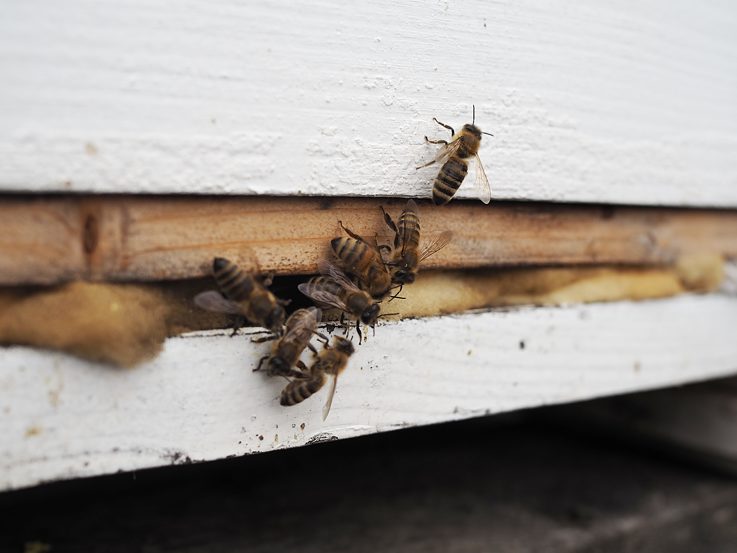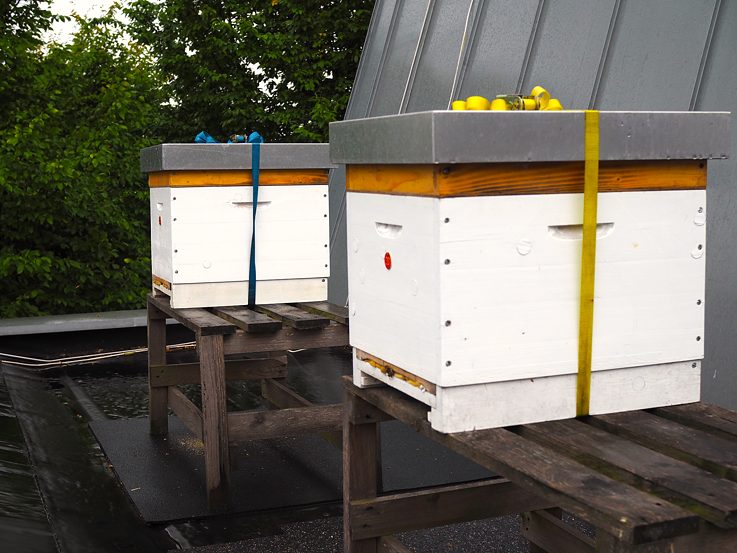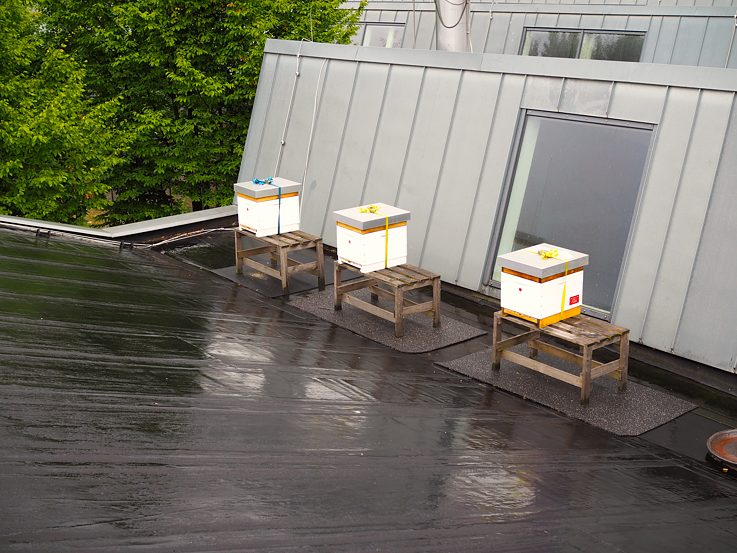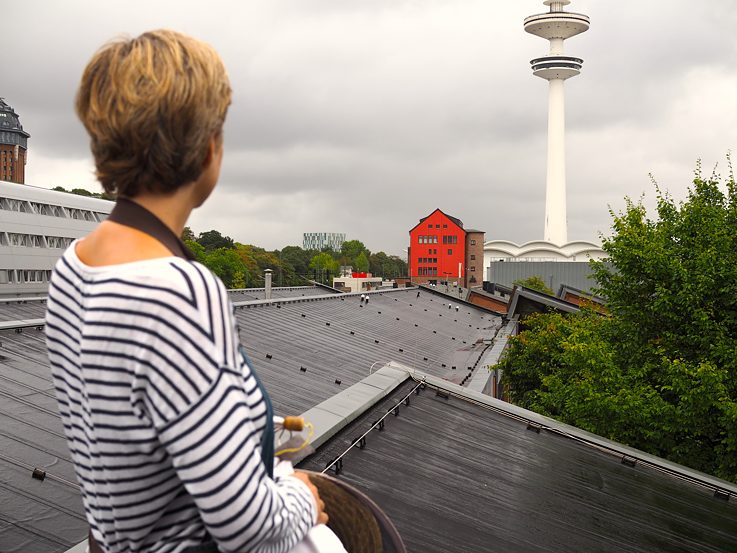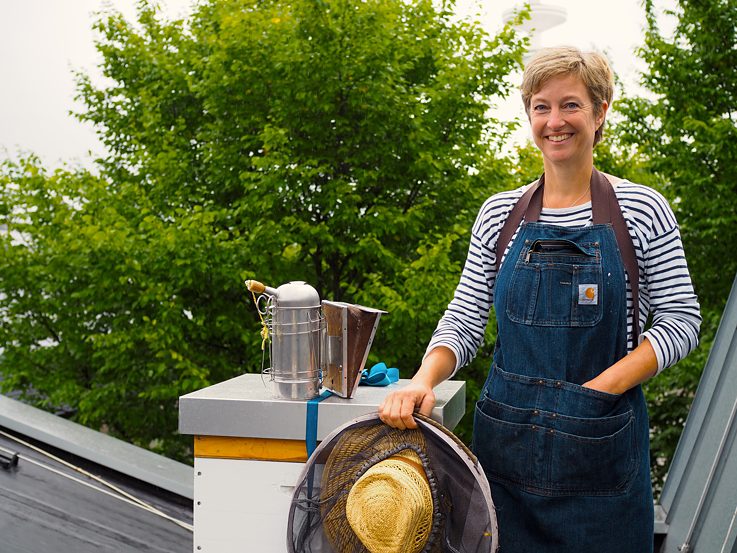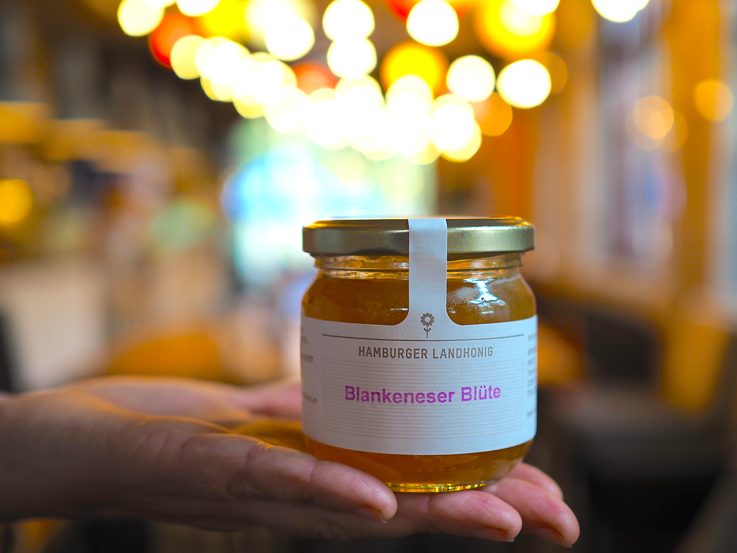Culinary Harbour Cities
Hiring beehives from the ‘bee lady’
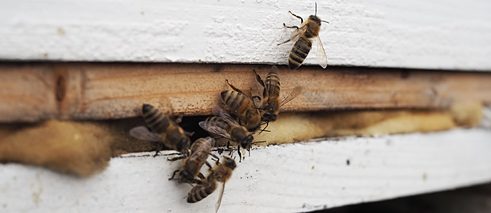
Judith Heimann is a beekeeper, yet honey is not her main source of income. Instead, she hires out bee colonies to private individuals, companies and restaurant owners, who then get to keep the resulting honey. Among her customers are the TV chef Tim Mälzer and his “Büllerei” restaurant, in the heart of the Sternschanze district of Hamburg. On its roof stand three hives, each containing over 50,000 bees.
Hiring out beehives and bees is an unusual business model. How did you get the idea?
About 10 years ago, I read a newspaper report about a beekeeper who was producing honey for hotels and restaurants on the rooftops of New York. This seized my imagination, and soon after I happened to meet Tim Mälzer. He was receptive to my idea of producing honey on the roof of his restaurant. We found that all the conditions were right – height, sunlight, shade, and decent pickings for the bees (and me), so we decided to go ahead. Then the word got around, one or two articles appeared in the newspapers, I was approached by some other customers as well.
Who are your “other” customers?
All sorts – restaurant owners, of course, but also a Hamburg shipping company, for example. Management was looking for a Christmas present for its employees, so we set up a hive right there at head office. It is now an established fixture – it has been there 5 years already, although the original plan was for one year only.
Then there is a dentist who has set up a beehive outside the window of the surgery. Instead of getting a green plastic elephant, her patients are rewarded with a little jar of honey.
And I also have two colonies of bees at the Hamburg Falkenstein golf course. You would be surprised - along with those immaculate lawns, in and around golf courses there are also lots of natural vegetation, gassy meadows, patches of forest, gentle slopes and heath areas, plus peace and quiet, in marked contrast to the city environment.
How do employees react to having a beehive at their workplace?
As I keep going in to care for the bees during the year, the staff begin to take an interest in what I am doing, and the bees become a topic of conversation in the workplace. I really enjoy telling people about bees – they can then pass the information to their families at home, and some of them bring their children in to watch when it is time to gather the honey from the hive.
And irrespective of the size of the firm or the business sector they are involved in, the bee colony ends up being ‘adopted’ as a kind of company pet. Employees start to look out the window to see how many bees are flying back and forth, whether they are taking pollen back to the hive, or if they are being disturbed by wasps. So we get talking about bees in general, and I tell them about how bees set about gathering pollen and nectar, how they turn it into honey, and the threats they face. I want the people who rent my hives to get an insight into all the steps that culminate in a jar of honey. The bees engage the employees’ feelings, and I really enjoy watching that happen.
The rent includes the whole package: the beehive, caring for the bees, harvesting the honey and filling the jars. My customers can see for themselves how honey is produced, right there in the workplace, and they can even lend a hand if they want to. The total cost varies a lot from one contract to another, depending on the scale of the service I am providing.
Urban beekeeping seems to be a trend these days. What is so good about it, do you think?
The good thing about urban beekeeping is that it brings a little bit of nature into the city, and people come to realise that it needs to be looked after, and supported with some other elements of the natural world: flowers in people’s gardens, clean water and some blue sky now and again. So hopefully beekeeping gets some people along these lines.
But along with all the benefits, urban beekeeping is quite a complex proposition, and there are all sorts of things to be taken into account in each specific location and situation: what will the wind, temperature and shade conditions be like up there on the roof, is there a suitable source of water, and above all, will the bees have the peace and quiet they need to go about their business? Obviously there is a lot of noise for them to contend with in the city environment, with the underground railway, construction sites, and road traffic, etc.
But surely bees fly around in the air above all that, and they don’t have to talk to each other?!
Oh yes they do! Bees are communicating with each other flat out, all the time. If a bee has found a good source of nectar, for example, it flies back to the hive to tell the others where to fly to. When there is too much noise and disturbance around the hive, they literally get the wrong message, and bees fly off in the wrong direction. The same applies to warnings of impending danger from wasps or hornets.
Is it true that there is more diversity in the city than in the countryside?
Not necessarily, it depends on exactly where you are talking about, both in the city and in the country. But one advantage in the urban environment is that there is always something in bloom, and the blossom season also ends later here. We generally get two harvests – one in May and June, then another in mid-July – this later harvest is mainly for linden tree blossom. Then that’s it – the bees spend the rest of the year getting ready for winter.
It was unusually hot in Hamburg this year. Was that a problem for the bees?
High temperatures are generally good for insects, including bees. But you have to be careful not to place a beehive in direct sunlight. In extreme cases, the wax in the hive could melt, which would be a total disaster. Fortunately that has never happened with any of my hives. The downside of extremely dry conditions is that the plants put out less nectar. The optimum is a mix of high temperatures and rain, because only plants that get plenty of water have got enough nectar to spare for the bees.
What is the best way to enjoy honey as a delicacy?
The Landhaus Flottbek restaurant serves the honey from my hives as honeycomb in their breakfast buffet. The whole honeycombs are there on the tables, and the guests cut off a little piece to spread on a croissant or brioche. In my opinion that is the best way of all to serve honey. You can either swallow the wax, or spit it out.
The only better way to enjoy honey is straight from the hive, with all the aromas and warmth of the beehive. Personally I am now going away from the idea of spreading honey on bread – it seems a bit of a waste. Honey should be enjoyed in and of itself, I have decided – with cheese, for example, to create spicy/savoury or spicy/bitter/sweet combinations.
